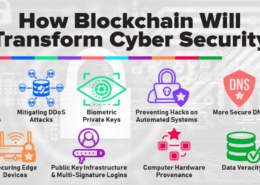What are some alternative tools to Kali Linux that can be utilized for cybersecurity purposes?
Balancing robust cybersecurity with digital transformation and productivity requires a strategic approach. Organizations can achieve this by adopting a risk-based security model, prioritizing measures based on the specific threats they face. Integrating security into the development lifecycle througRead more
Balancing robust cybersecurity with digital transformation and productivity requires a strategic approach. Organizations can achieve this by adopting a risk-based security model, prioritizing measures based on the specific threats they face. Integrating security into the development lifecycle through DevSecOps ensures vulnerabilities are addressed early, minimizing disruptions. Implementing user-friendly security solutions that do not hinder productivity can also foster compliance.
Key challenges include resource allocation, employee resistance, integration complexity, evolving threats, regulatory compliance, and skill gaps. Addressing these involves several strategies:
- Resource Allocation: Balance investment between security and transformation initiatives, emphasizing critical areas.
- Employee Resistance: Foster a security-first culture through training and clear communication about the importance of security.
- Integration Complexity: Use modular and scalable security solutions that integrate seamlessly with existing systems.
- Evolving Threats: Regularly update and review security policies to stay ahead of new threats.
- Compliance: Stay informed and adapt to regulatory changes.
- Skill Gaps: Invest in ongoing training and development for staff.
By embedding security into the core of digital initiatives and maintaining a proactive stance, organizations can enhance both security and productivity.
See less


Today, India is one of the rapidly growing nations with maximum number of digital transformations. It has become technologically independent and digitally advanced. The rise in e-commerce business has completely transformed the nation’s digital infrastructure. But the rapidly growing digitization alRead more
Today, India is one of the rapidly growing nations with maximum number of digital transformations. It has become technologically independent and digitally advanced. The rise in e-commerce business has completely transformed the nation’s digital infrastructure. But the rapidly growing digitization also brings in huge possibilities of cyber-attacks.This comes in form of web and phishing attacks, unauthorized access to the system and software, cyber defamation, and more that might cause huge financial loss and harm consumer’s trust. Therefore, it becomes essential to address these cyber threats and challenges that accompany digital transformation.
See lessIndia is focusing on implementing a multi-faceted approach to promote digital transformation while ensuring cyber security. Some relevant key measures are :
i)The Information Technology (IT) Act 2000 offers a legal framework for e-governance and cyber security. The Act addresses the legal challenges occurring in digital transactions.
ii)The Personal Data Protection Bill (2019) offers measures to regulate data collections, storage, and processing.
iii)The country is also focusing on utilizing AI technology to foster its digital infrastructure. For instance, the National Centre of Excellence for AI focuses on establishing ethical AI practices to ensure user privacy and security.
iv)The National Cyber Security Policy (2013) has been amended to create a secure cyber environment by offering indigenous cyber security solutions.
v)Then, there’s also Cyber Surakshit Bharat program which aims to utilize best practices to train the government staffs with the best cyber security practices.